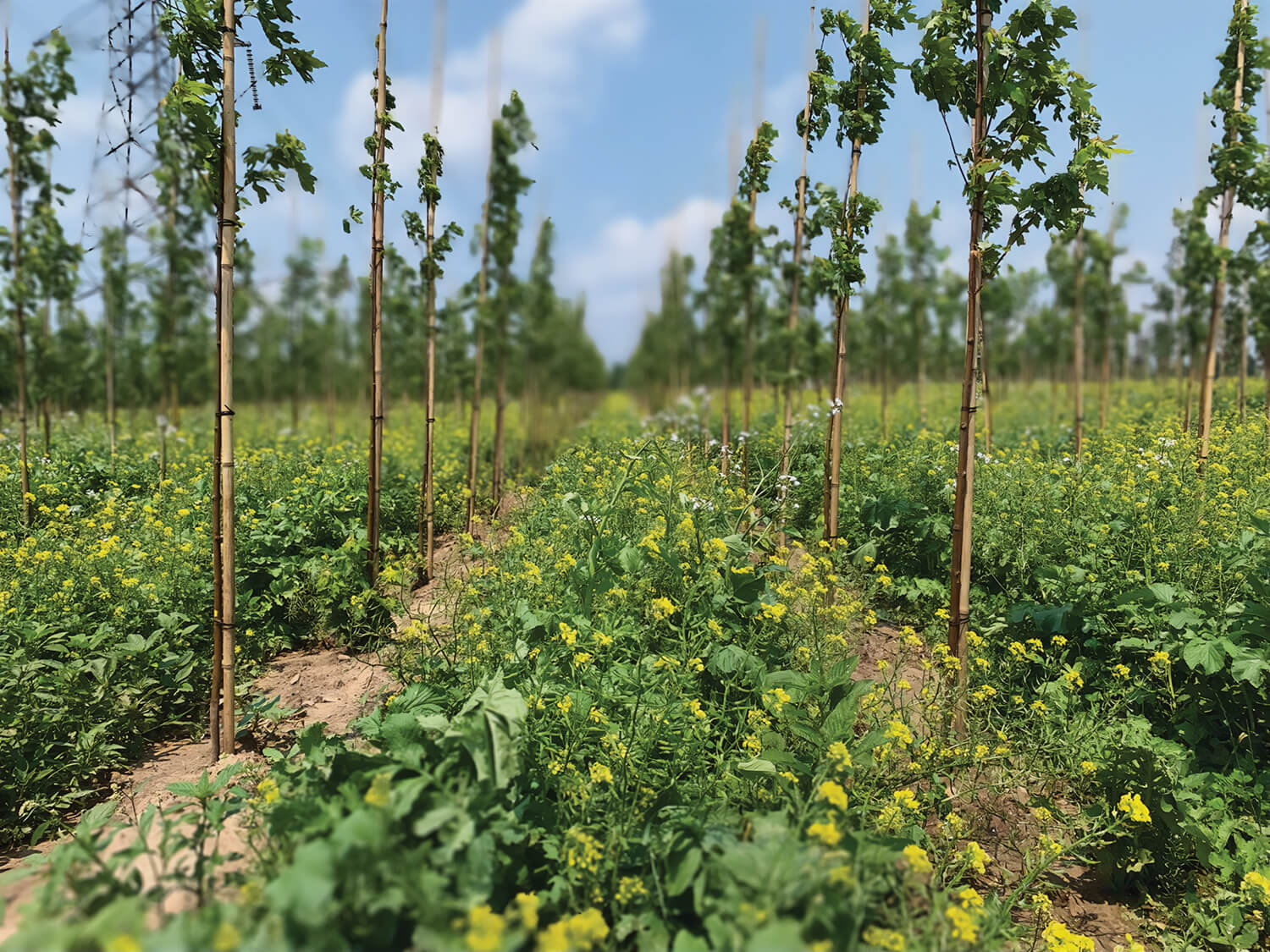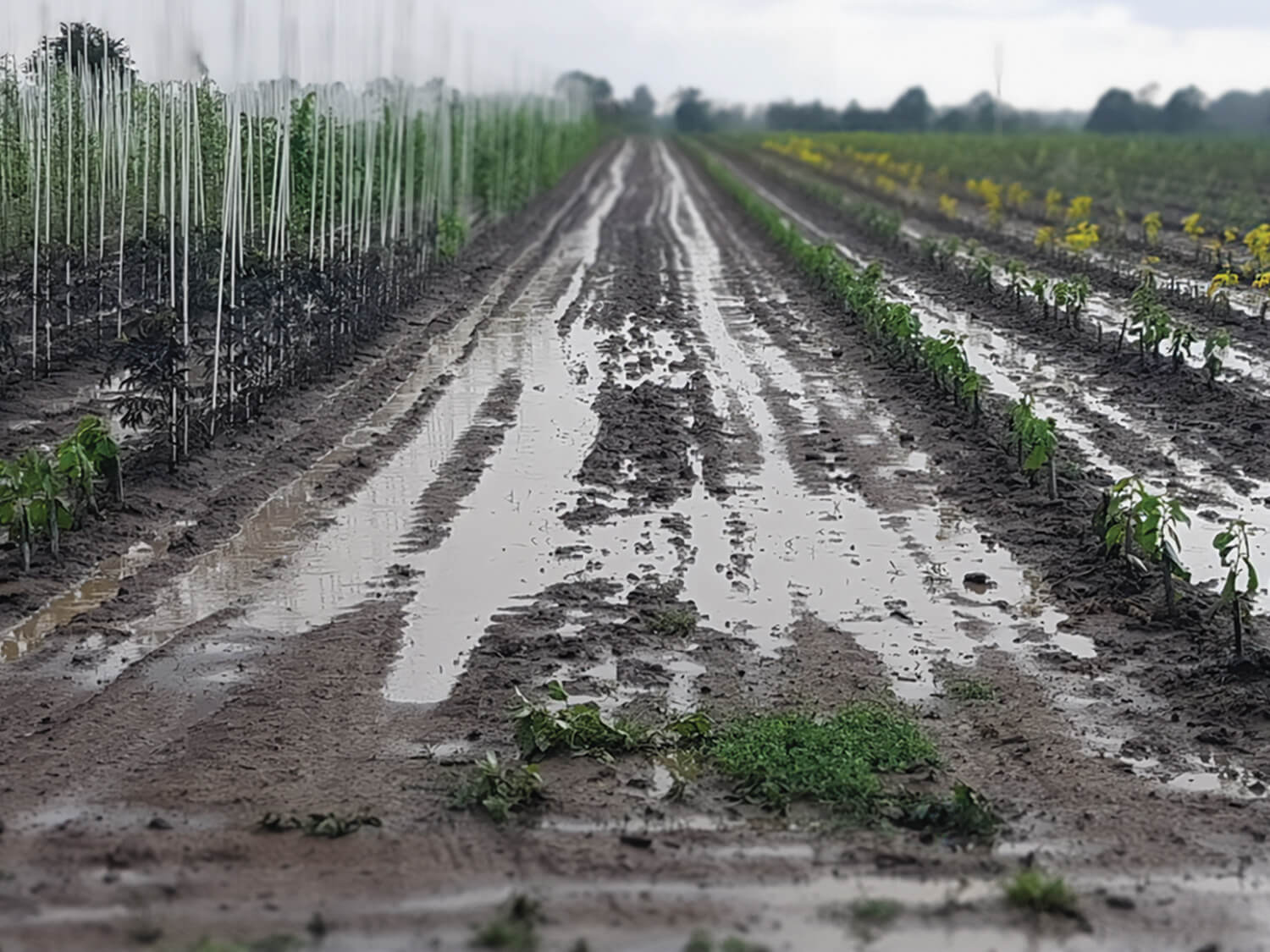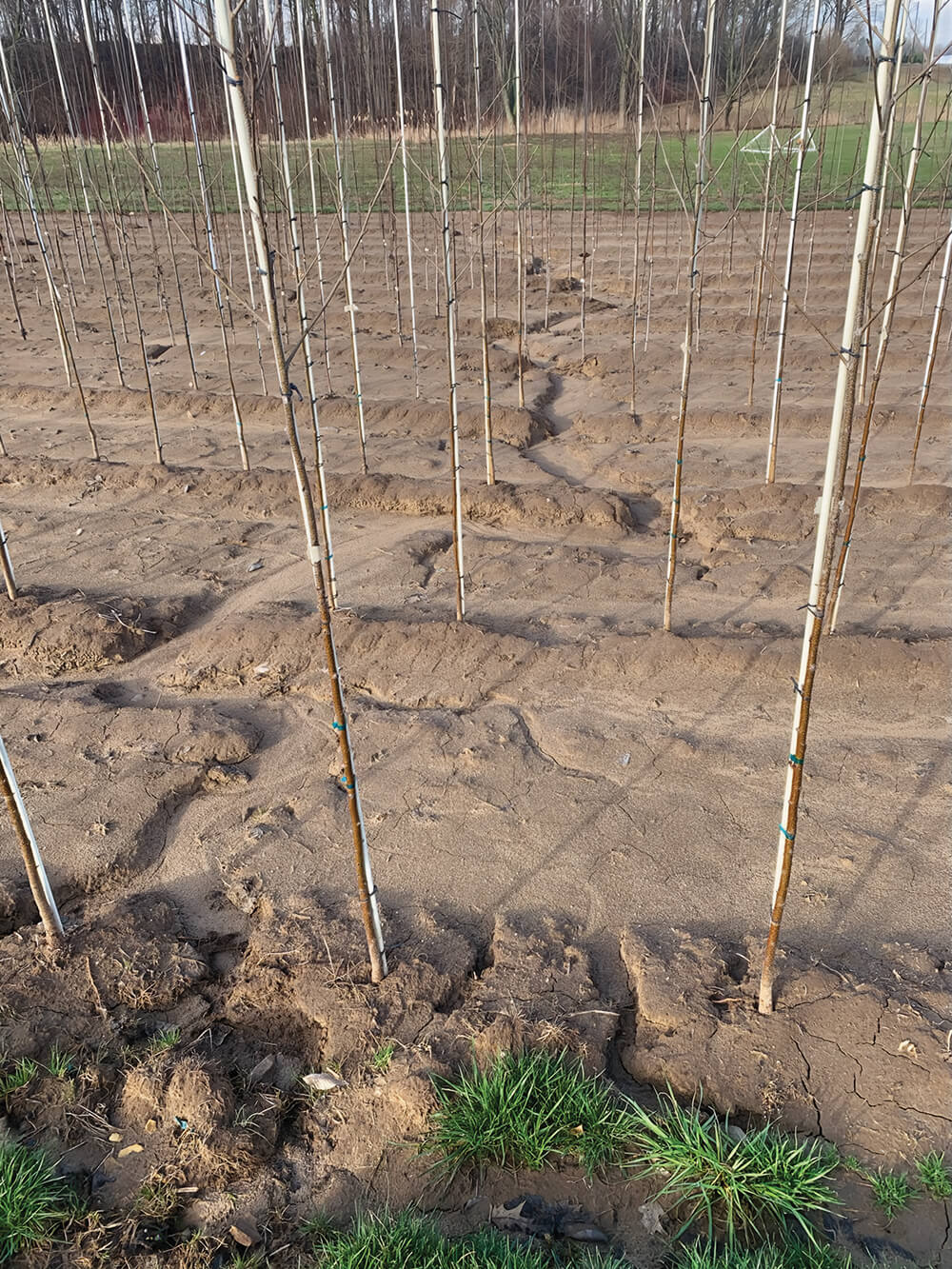November 28, 2023
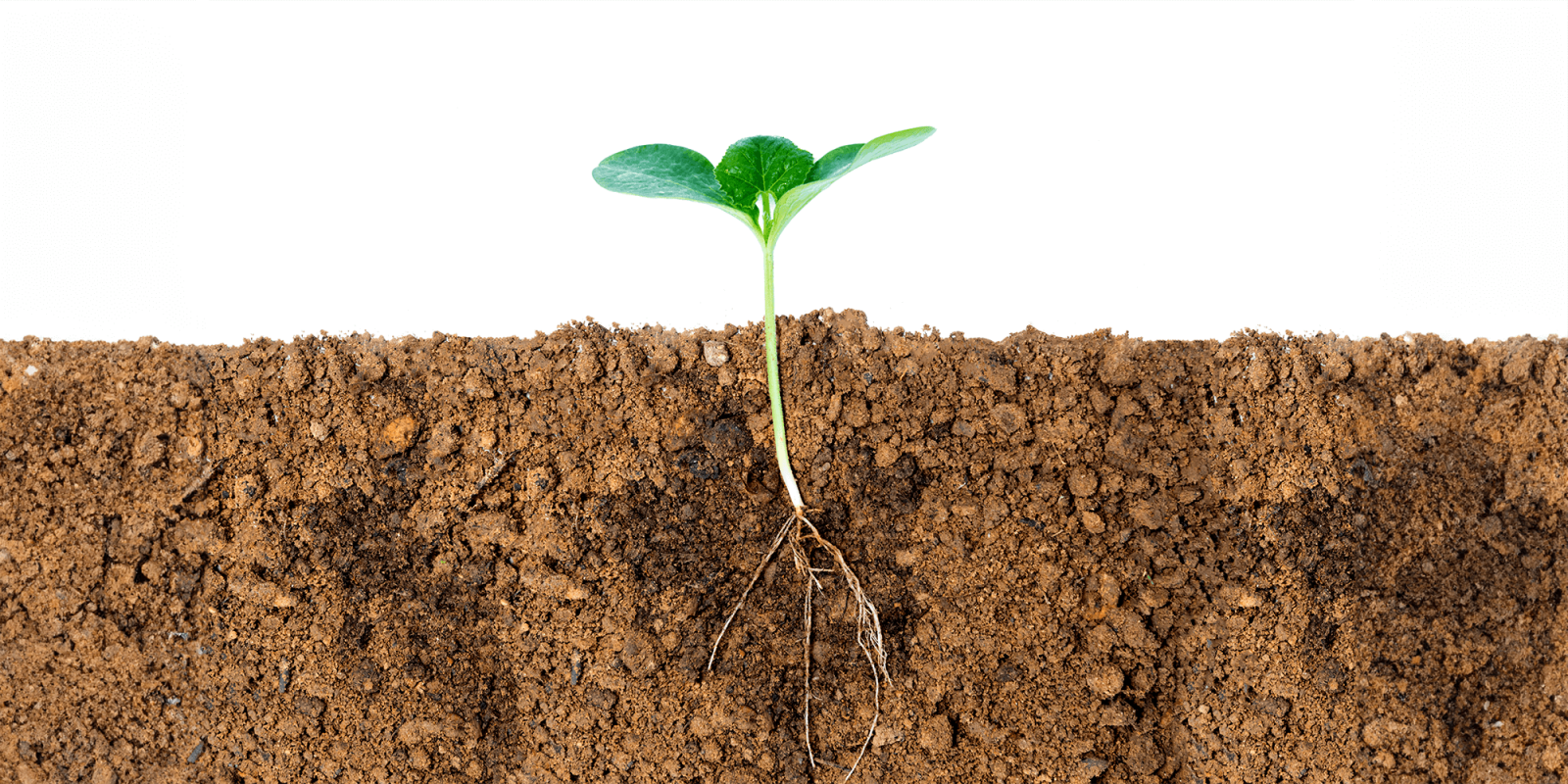
Soil that sustains
Embracing healthy practices to protect the earth and boost profitability
BY GILLES LAPOINTE, PhD
These days everybody talks about sustainability, but do we really know what that crucial term means? As an agriculture and horticulture research scientist, it’s amazing to see so many people want to take part in this conversation. Many companies and associations have been born of it and universities are even developing degree programs to train the next generation. But just because everyone is talking about it doesn’t mean we’re getting it right. It’s a field of work that requires excellent planning and knowledge — whether working in agriculture or the nursery sector — especially when it comes to promoting healthy and sustainable soil. Focusing on soil health is also good for the future of your business — after all, the goal is producing healthy plants for sale year after year.
Canada’s agriculture sector contributes about 10 per cent of our total greenhouse gas emissions, which may seem like a lot — especially considering this figure doesn’t include fossil fuel or fertilizer production. But we will not reach current emissions targets of a 40 to 45 per cent decrease by 2030 and net zero by 2050 through reforming agricultural practices alone. We need to look at ourselves in the landscape and horticultural sector as well. We need to stop being afraid of change and instead be inventive and jump right in. When it comes to promoting soil health, the equation is clear:
Soil Health = Plant Health = Increased Profitability
Soil disturbance + chemicals = Poor soil health
Getting to the healthy side of this equation is tough because it requires changes in how we approach and manage our businesses. I recently had a discussion on sustainability with an old friend of mine who is a researcher at Agriculture and Agri-Food Canada. While my friend works in public sector research and I work in the private sector, we’ve both reached the same conclusion: we won’t get to the 2030 nor 2050 deadlines the way we’re going. In order to solve soil health and become sustainable, we need to change in a bigger way. This is part of “regenerative agriculture,” which proclaims that it takes time for changes to happen. With 2030 only six years away, the time for change is now!
The nursery sector is our secret weapon
The nursery sector has the capacity to sequester carbon like no other type of agriculture — making it the underdog that will help us reach our goals. Coupled with the landscaping industry, it’s a match made in heaven. For this to work, however, we need to get organized. Our practices need to change: for example, by decreasing soil disturbance, increasing crop diversity, composting on site and decreasing the use of synthetic products. We have all the information we need at hand, from scientific data to farmers’ practices in various settings. But often, even well-meaning business owners simply do not know how to apply the change-related information correctly.Collaboration is crucial
Let’s take a look at two existing models of how the agricultural and nursery sectors can work together: Ontario and Quebec. Ontario has some of the largest nurseries in Canada, but there’s a lack of deep synergy between nurseries and agriculture. We have a number of great organizations like Landscape Ontario, the Canadian Nursery Landscape Association and the Vineland Research and Innovation Centre, but very few research programs are conducted with nurseries alongside the Ontario Ministry of Agriculture, Food and Rural Affairs (OMAFRA). Quebec offers a more integrated model.In the 1990s, Quebec re-organized its agricultural system and created the Quebec Institute for the Development of Ornamental Horticulture (IQDHO), a private non-profit organization resulting from a partnership between the Ministry of Agriculture, Fisheries and Food Quebec (MAPAQ) and Québec Vert. Quebec also has a very strong association for agronomists (Ordre des lgronomes du Québec), and even the Réseau végétal Québec, which bridges fertilizers, seeds and phytoprotection. All of this collaboration really works! I love to speak with the folks out there because they’re so much more advanced than us in Ontario when it comes to soil health approaches and the dynamics and synergy between nurseries. IQDHO has over 25 agronomists strictly working on the ground with nurseries. Every year, they carry out applied research in nurseries and the results are shared at a three-day conference. I believe we need something like this in the rest of the country.
Quebec farmers are also the most fun to watch and read about in group chats on Facebook and in person at their annual conference (Colloque IQDHO), because they try so many different techniques and their soil health grows. Basically the nursery owners in Quebec work together through their association with conferences, workshop days and ongoing joint research. I believe Ontario is lagging, and nurseries deserve so much more.
No matter where you live, we’re all trying to do the same thing: produce healthy plants and sell them. This is best accomplished through soil health. That’s where everything happens. Soil sequesters lots of carbon, but we need to give it the carbon to stock: compost, roots, stop tillage, etc. This carbon feeds the microbes needed to interact with plant roots.
We also need to decrease soil disturbance, as it exposes the carbon, degrades it, lowers the organic matter and kills microbes. Let's think about fallow fields post–tree harvest, for example. We should use heavy compost at least once, and seed a super diverse cover crop (no sorghum monoculture please!), then refrain from plowing the fields prior to planting the next crop of trees. If we do disturb the soil, we need to quickly repair it. I know this technique is effective because I’ve done it. However, the technique needs to be applied consistently; if you do it once then quickly revert to your old ways, you end up doubling your costs — maybe even tripling them. Along with that, you increase your emissions. Not sustainable, right?
Capturing bad carbon in a big way
The best machinery on earth is photosynthesis. It happens naturally all on its own. It does two things for us: takes the carbon from the air and stores it inside the plant. In other words, it lowers greenhouse gasses and sequesters carbon. Now, let's revisit my claim that the nursery sector is the underdog that will help us reach our goal. While all photosynthesis is productive for carbon capture, trees are the most helpful because of their size and longevity. They clean the air and store carbon in their trunk and roots. Nurseries produce trees, sell them and keep producing more trees. Landscape companies select and plant the trees. Let’s say a nursery sells 10,000 five-year-old caliper trees (grown on eight acres). The nursery replaces these trees with new ones to be sold in the future, furthering the cycle. To get scientific, let’s run some numbers: 20,000 trees sequester: 10,000 lbs. (new nursery trees) + 51,500 lbs. (five y/o trees sold) + 97,200 lbs. (cover crops) = 158,700 lbs. of CO2. If in the second year 10,000 more trees are sold, bought and planted, we end up with: 10,000 lbs. + 51,500 lbs. + 69,800 lbs. + 97,200 lbs. = 228,500 lbs. of CO2. When we compare this with standard agriculture — for example wheat, which can sequester 80,000 lbs. of CO2/8 acres — we can easily see the potential of growing trees. They can help our planet, help governments reach targets… and help us all. How we reach 2030 and 2050 targets Reaching the targets is imperative and moving slowly toward optimal soil health is not enough. We need to modify management and maintenance with a plan that keeps profitability in mind. We also need to understand what it is we’re trying to accomplish. The end product for both the nursery sector and the landscaping industry as a whole is a healthy, strong and thriving plant. Profitability for both is a must — so we must keep the economics of soil health in our minds.The key element for companies to remember is that sustainability = profitability. We must ask ourselves the right questions. What can I do to decrease my use of synthetic fertilizer? Can I decrease the use of costly herbicides by planting cover crops instead? Once you’ve paid for the seeds and seeding costs, you’re done. With cover crops in place, there’s less need for hoeing — meaning less machine and labour costs. And with healthier soil comes healthier plants, which have monetary value.
Plan during winter
In winter, things slow down a little. We have more time to look at our waste management practices and re-route resources to create a composting zone on nursery grounds for the coming season, if possible. If we lack composting inputs, we can work with landscaping companies to obtain their greens. If we can afford it and need to, we can buy quality compost. But just know this will never be as good as making your own. Regardless of which you choose to use, remember it must be real compost, so if you’re purchasing it, ensure you obtain test results first. And let’s not get cocky here: everyone who creates compost needs knowledge and practice. It’s also important to test your end product if you’re creating it yourself.If composting is done improperly, we’ll end up spreading unknown components often classified as toxic by a Solvita Test. This pile of organics will have weed seeds that will have survived the process. It’s also a well-known scientific fact that when composting is not done properly with the right moisture and the right temperature and air circulation, you end up producing more greenhouse gasses.
Diversity is key
Reaching our targets will also require landscape companies to use a wider selection of plants. We need more cover crop diversity for our nurseries. An increase in plant diversity is the only way we’ll make it all the way to increasing soil health. And while minimalist landscape designs are trendy, pavers do not sequester carbon — and the plants used in such designs often have shorter life spans. Remember that a plant’s roots synergistically interact with soil microbes to exchange nutrients. The more diverse the plantings, the more microbes there are in the soil and the more the exchanges increase. Plants are also known to exchange nutrients between each other (I recommend you read Finding the Mother Tree by Suzanne Simard for more on that). On top of having a high sustainability impact, diverse landscapes sequester more carbon, are cooler for the owner in the summer and live longer.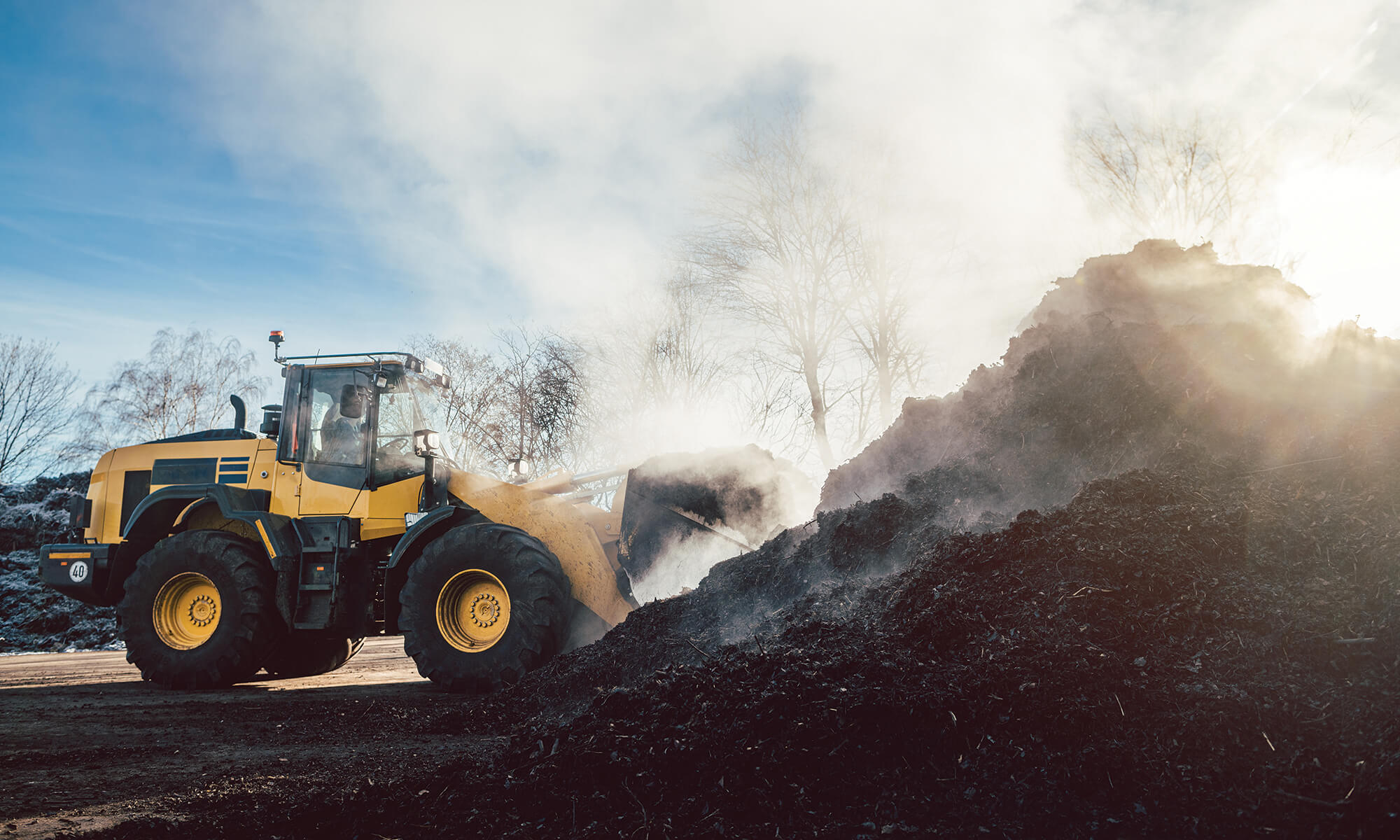 Composting isn’t difficult, but we need to follow guidelines and recipes for the inputs to compost.
Composting isn’t difficult, but we need to follow guidelines and recipes for the inputs to compost.
Talking about plant diversity is also essential for nursery owners looking for groundcover. For example, some nurseries have told me, “I love white clover and this is what I use.” But this requires some decision making for management: the timing for seeding clover is critical and often doesn’t work for nurseries involved in planting trees and then digging them up in spring and fall. White clover is really slow at growing and too often the weeds take over when planted alone. Planting as a “monoculture” goes against environmental sustainability. But did you know that when planted with some grass species, white clover will increase its nitrogen production in order to help the neighbouring plants? You could instead mix clover with several other species growing faster and over time it will take; the companion plants will protect it during its establishment against weeds and more.
Plants are so cool and we need to work with them better. In your fallow fields, for example, include a percentage of clover with your sorghum and you won’t need to use synthetic fertilizer after the first cut.
When a landscaping company increases plant density and diversity, the landscape needs less watering, less maintenance and less “food.” It is self-sufficient for a longer period of time, as fewer diseases appear and it becomes less weedy. Don’t only limit your choice of plants by look: consider their functionality. In 2021, I observed a deep drought in some areas of nursery grounds in Ontario. When the cover crops had not been managed properly and grasses grew primarily, these sections of land were yellow. The grasses went dormant during the drought, and the trees around them also suffered and shut down. On sections of land where the proportion of clover and grasses were appropriate, the cover crop grew slower, of course, but remained green, lush, cooler on the ground and moist. The trees in these sections looked healthier too.
There is so much knowledge out there and I say, let's use it! I’ll finish with a quote from the Canadian rancher Don Campbell: “If you want to make small changes, change the way you do things. If you want to make major changes, change the way you see things.”
Dr. Gilles Lapointe is a specialist on sustainability, cover crops, management change and soil health. He leads and manages applied research projects on farms helping them reach sustainability. He works primarily with tree nurseries and in standard agriculture through Oasis Ontario.
